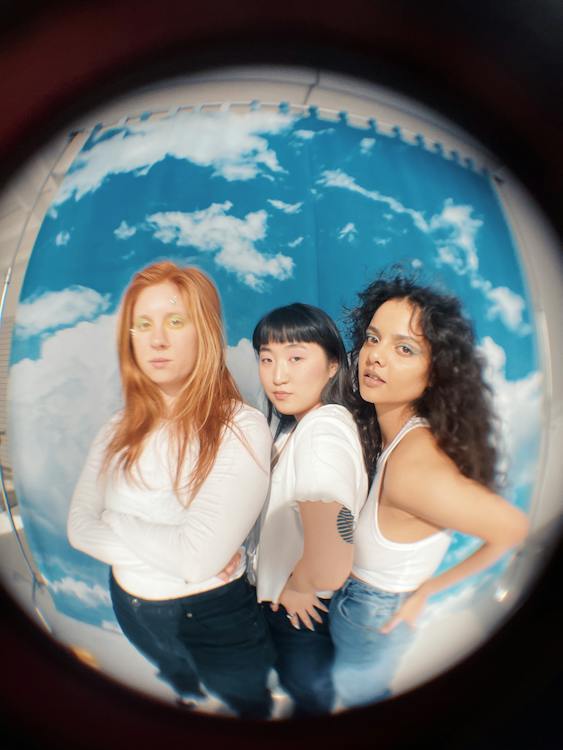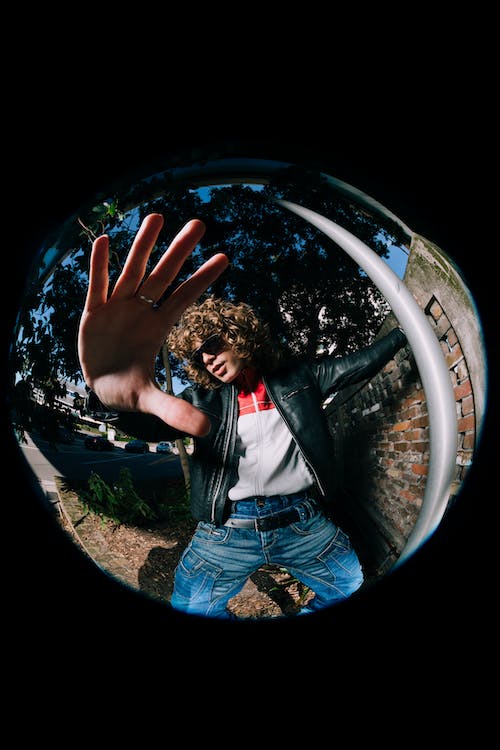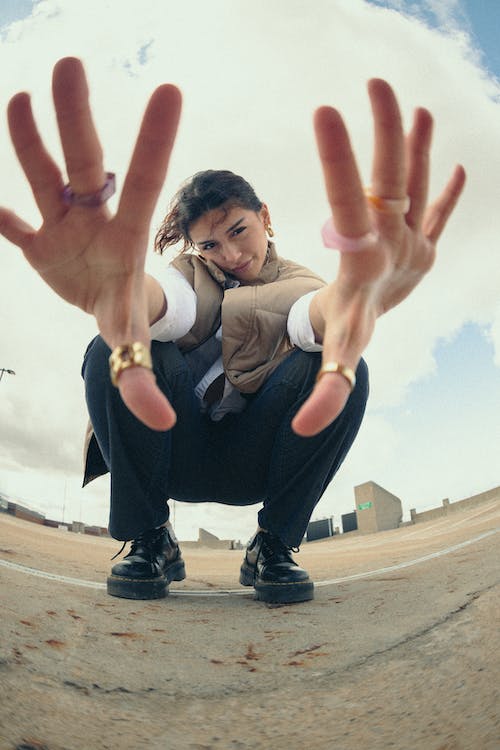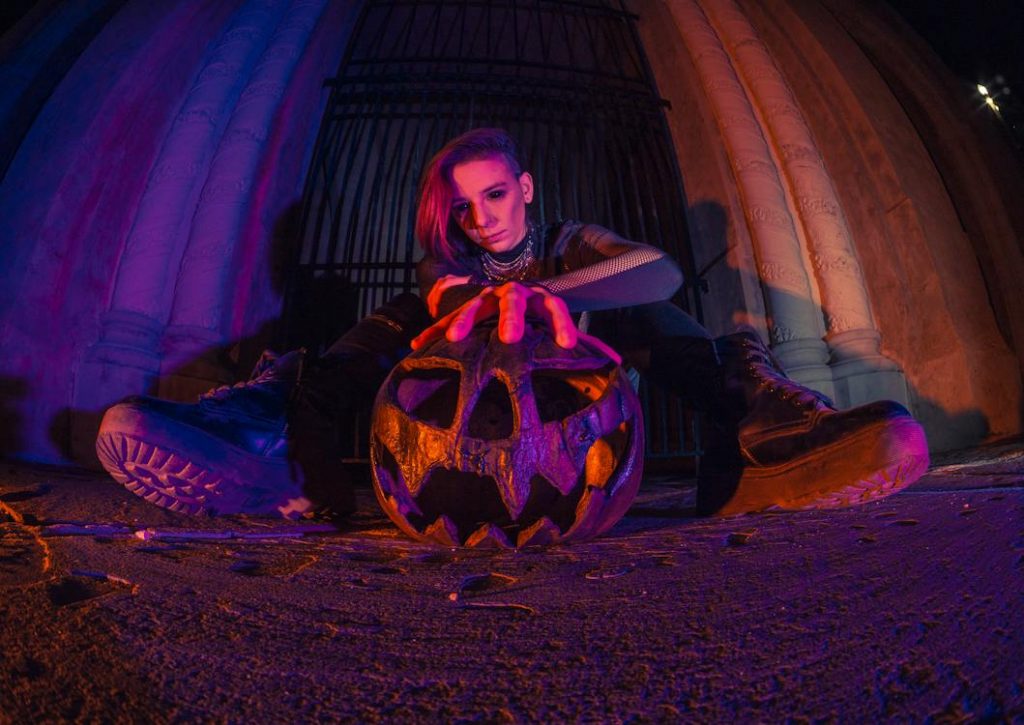In photography, fisheye lenses have carved a niche for themselves. This especially stands out when you use a fisheye lens for portrait photography. These unique lenses, known for their extreme wide-angle views and pronounced distortion, have gained significant popularity among photographers seeking to capture the uniqueness of people in a distinctive way.
Table of Contents
Understanding Fisheye Lenses
One defining feature of these lenses is the significant barrel distortion they introduce. Barrel distortion refers to the curvature of straight lines, creating a bulging effect towards the edges of the frame. While some might consider this distortion a limitation, astute photographers recognize it as a powerful tool for artistic expression.
Optical Characteristics
To fully grasp the creative possibilities of fisheye lenses, it’s essential to delve into their optical characteristics. Unlike conventional lenses that aim for optical precision and rectilinear images, fisheye lenses embrace distortion. The curvature they introduce can transform a mundane scene into a visually striking composition.
Field of View
The most striking feature of fisheye lenses is their unparalleled field of view, often exceeding 180 degrees. This expansive perspective allows photographers to capture vast landscapes, towering structures, or immersive interiors in a single shot. It’s this unique characteristic that sets fisheye lenses apart and makes them a favorite among photographers.
Distortion as a Creative Element
Far from being a technical flaw, barrel distortion in fisheye lenses serves as a creative element. It can exaggerate the foreground, leading to a sense of depth and dimensionality. This distortion also imparts a sense of dynamism, adding energy to static scenes. Photographers adept at understanding and manipulating this distortion can use it to their advantage, creating images that evoke emotion and capture the viewer’s attention.

Harnessing Distortion Creatively
Embracing the distortion of a fisheye lens for portrait photography requires a shift in perspective for photographers. Instead of trying to eliminate or correct distortion, the goal becomes to leverage it for artistic effect. Here are some ways photographers can harness distortion creatively:
Leading Lines and Curves
Use the natural curvature of fisheye distortion to enhance leading lines and curves within the frame. This can draw the viewer’s eyes throughout the image, creating a dynamic visual experience.
Emphasizing Foreground Elements
The distortion at the edges of the frame can emphasize foreground elements, making them larger than life. This technique is particularly effective when photographing facial details or unique features.
Creating Surreal Environments
Fisheye distortion can lend a surreal quality to images, turning ordinary scenes into otherworldly photos. This can be especially captivating when shooting nature, where the distortion adds an artistic touch to the environment.
Experimenting with Angles
By varying shooting angles, photographers can manipulate how distortion manifests in their images. Shooting from low or high angles can produce different effects, providing a versatile range of creative choices.
Tips for Effective Use of A Fisheye Lens for Portrait Photography
Mastering the art of using a fisheye lens for portrait photography involves more than simply attaching the lens to your camera. To truly maximize the impact of fisheye shots, photographers should adopt a mindset of exploration and experimentation. Here are valuable tips for creating visually compelling images by harnessing the unique characteristics of fisheye lenses.
Explore Different Shooting Angles
Fisheye lenses thrive on unconventional perspectives. Experiment with shooting angles that deviate from the norm. Instead of capturing a person straight on, consider shooting from low angles to emphasize height or from high angles to showcase other details. The versatility of a fisheye lens for portrait photography allows photographers to play with angles, unveiling fresh and captivating viewpoints.
Utilize Distortion for Creative Effect
Rather than considering distortion a hindrance, leverage it as a creative tool. Intentionally manage and manipulate distortion to enhance the overall aesthetic of your portrait photographs. Use the bulging effect at the edges of the frame to draw attention to specific elements or create a sense of depth within the image. By embracing distortion, photographers can infuse a dynamic and artistic quality into their shots.
Experiment with Framing and Composition
The expansive field of view offered by fisheye lenses allows for experimentation with framing and composition. Consider incorporating surrounding elements to frame the main subject uniquely. The curvature of the lens can enhance leading lines and guide the viewer’s eye through the composition. Be bold in your compositional choices, and don’t be afraid to break traditional rules to achieve a distinctive visual impact.

Use HDR Techniques for Balanced Exposures
Given the expansive scenes fisheye lenses capture, managing exposure becomes crucial. High Dynamic Range (HDR) techniques can help achieve balanced exposures, especially in challenging lighting conditions. Bracket your shots at varying exposures and merge them in post-processing to retain details in both highlight and shadow areas, ensuring a well-exposed final image.
Experiment with Monochrome Photography
Fisheye lenses can lend a dramatic touch to monochrome portrait photography. The distortion and wide perspective can accentuate contrasts and textures, creating powerful black and white images. Experimenting with monochrome adds a timeless and artistic dimension to your architectural shots.
Fisheye Lens Maintenance
Fisheye lenses, like any other photographic equipment, require proper care to preserve their optical quality and functionality. This section offers practical tips for cleaning and caring for fisheye lenses, ensuring they remain in pristine condition for years to come.
Handle with Care
The first rule of maintaining any lens, including fisheye lenses, is to handle them with care. Always use both hands when attaching or detaching the lens to prevent unnecessary stress on the lens mount. Avoid placing the lens on uneven surfaces or exposing it to harsh impacts. Being gentle in your handling ensures the internal components stay aligned and undamaged.
Protective Lens Filters
Consider using a high-quality UV or clear protective filter on your fisheye lens. These filters act as a barrier, shielding the lens from scratches, dust, and other potential hazards. In the event of accidental contact or debris, it’s easier to replace a filter than to repair or clean the lens itself.
Regular Cleaning Routine
Dust, fingerprints, and smudges can accumulate on the lens surface, affecting image quality. Establish a regular cleaning routine to keep your fisheye lens in top condition. Use a soft lens brush or air blower to remove loose particles before wiping the lens with a microfiber cloth. For stubborn smudges, dampen the cloth with a lens cleaning solution specifically designed for optical surfaces.
Avoid Direct Sunlight and Heat
Exposing your fisheye lens to direct sunlight for prolonged periods can cause internal components to overheat and may lead to lens damage. Additionally, extreme heat can affect the lens coatings. When not in use, store your lens in a cool, dry place away from direct sunlight to prevent unnecessary wear and tear.

Lens Caps and Hoods
Always use lens caps and hoods when your fisheye lens is not in use. Lens caps protect the front and rear elements from dust, scratches, and accidental touches. Lens hoods help minimize lens flare and protect the lens from glare and harsh light. Utilizing these accessories adds an extra layer of defense against environmental factors.
Store Properly in a Case
Invest in a padded camera bag or lens case to store your fisheye lens safely. Ensure the case provides adequate protection from impacts and has a secure compartment to prevent the lens from moving around during transport. Storing your lens properly minimizes the risk of damage and keeps it ready for action whenever you need it.
Professional Maintenance Checks
Consider periodic professional maintenance checks for your fisheye lens. Camera service centers can perform thorough inspections, cleaning, and adjustments to ensure the lens’s internal mechanisms are functioning optimally. Professional maintenance becomes particularly important if you use your fisheye lens frequently or in challenging environments.

Conclusion
In conclusion, fisheye lenses open up exciting possibilities for portrait photographers, allowing them to capture spaces in a way that transcends traditional perspectives. The benefits of using a fisheye lenses for portrait photography are vast, from showcasing new POV’s to adding a touch of creativity through distortion.
Photographers are encouraged to embrace the unique qualities of fisheye lenses, experiment with angles, and push creative boundaries to unlock the full potential of this distinctive tool.
FAQs
Can fisheye lenses be used for indoor portrait photography?
Absolutely! Fisheye lenses excel at capturing expansive indoor spaces, making them ideal for portrait photography.
Do fisheye lenses work with all camera models?
Fisheye lenses come in various mounts, ensuring compatibility with a wide range of camera models, including DSLRs and mirrorless cameras.
How do photographers manage distortion in fisheye shots?
Skilled photographers intentionally use distortion for creative effect, while post-processing techniques can also help fine-tune the final result.
Are fisheye lenses suitable for professional architectural photography?
Yes, many professional photographers leverage fisheye lenses to add a unique perspective to their architectural portfolios.
What are some budget-friendly alternatives to fisheye lenses?
DIY lens attachments, smartphone applications, and editing tools offer budget-friendly ways to experiment with fisheye effects.

Afterword
We hope that you find this article helpful. Thank you for reading and you’re always free to leave a comment. If you find this article interesting, consider checking out one of our recently published posts. A few of them showcase advancements in technology such as AI Art Generators. On the other hand, if you’re looking towards Photography, we also offer great articles for your inspiration. We also have multiple articles that talk about the various printing mediums for wall art. May these articles give you inspiration for your next print!
Find them here:
Discover the Secret to High-quality Canvas Prints
The 9 Best Canvas Print Companies in 2023
Acrylic Prints: Add Vibrance to Any Space
The Top Food Photography Trends to Try Now
The Ultimate Guide to Continuous Lighting for Photography
Stable Diffusion Tips and Tricks
Best AI Art Generator for Android Phones 2023
We enjoy reading your comments and insights with our posts! Should you have any questions or concerns, feel free to leave them below! -Mark

